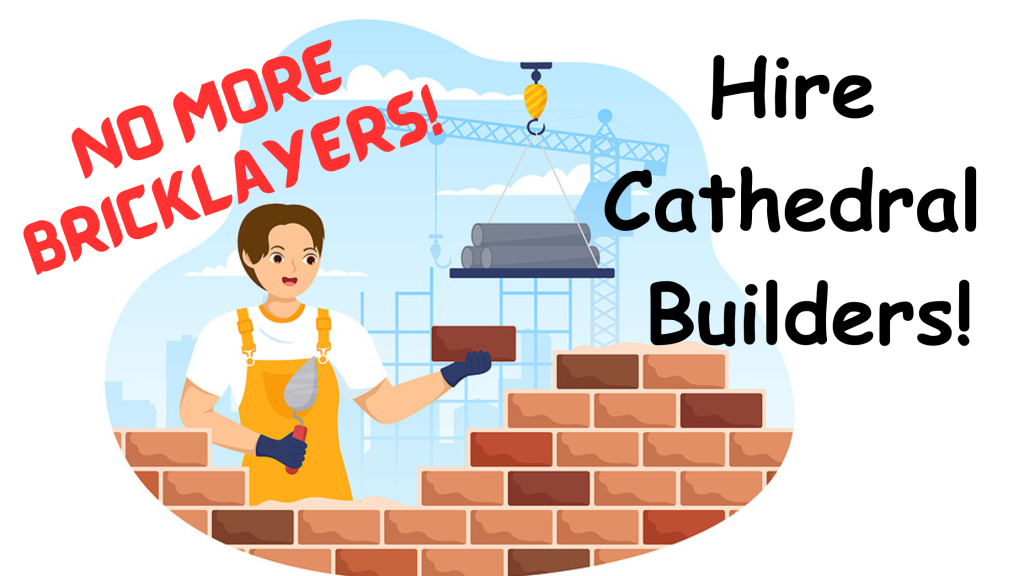One day at the coffee shop where we hang out, my friend Will said something that reminded me of the parable of the Three Bricklayers. In that moment, I realized how well this tale illustrates the difference between the right person for the job and applicants who are unsatisfactory.
In a previous article, I suggested that responses of candidates during interviews be divided into three categories: unsatisfactory, satisfactory or outstanding (the type of response you would expect to hear from your top performers).
The Three Bricklayers parable provides another way of demonstrating the distinction between candidates who have the potential to be top performers and those to avoid hiring.
There are several versions of this story, but what all have in common is a passerby who pauses at a construction site and asks the same questions of three workers. In some versions, the passerby is Christopher Wren, the architect responsible for rebuilding St. Paul’s Cathedral in London after the Great Fire of London in 1666. Other versions feature a man looking for people to build a house or a tourist visiting the city.
What does not change is the question: “What are you doing?”
The first worker responds, “I’m laying bricks to earn enough money to feed my family.”
The second: “I am building a wall, straight and tall.”
Finally, the third worker says, “ I am building a cathedral that will stand more than 100 years to celebrate man’s love for God.”
The distinction among these three men is clear. For the first worker, it’s just another job. For the second, it’s his career. And for the third, it’s a calling. He sees what he does as part of the bigger picture.
The latter response is reminiscent of how a NASA custodian described his role to U.S. president J.F. Kennedy: “I’m helping put a man on the moon.”
He understood the space agency’s mission in the same way your top performers understand how their work contributes to your organization fulfilling its purpose, as reflected in its mission and vision statements and goals.
When you hire people who describe how what they did in previous jobs fit into the bigger picture, you are adding individuals who will be engaged and focused on helping your organization achieve its vision. Those individuals are the ones that will make your organization successful.
To use interviews to discover whether a candidate sees what they do as more than just another job, ask, “Why did what you did in your previous job matter?” or “How did what you did in your previous job contribute to the success of the organization?”
The right person to hire is the one who talks about the organization’s mission, vision and goals and how what they did contributed to its success.
Every issue of my Briefly Noted newsletter includes, “A question that may help you hire the right people,” with suggestions on how to assess candidates’ responses on a five-point scale, from unsatisfactory (1), to satisfactory (3) and outstanding (5).
As a followup to this article, I intended to include in each of the next two issues of my biweekly newsletter, Briefly Noted, one of the questions from this article and suggest how you might assess candidates’ responses. In addition, I will include tips on how to provide Relevant staff recognition.
Not a Briefly Noted subscriber? Click here to sign up and receive a copy of my Staff Recognition BINGO card.
Once you have hired the right person, staff recognition becomes a strategic tool to clarify the purpose of the organization and ensure that staff members—both new and existing—remain focused on why their job is important. Relevant recognition reflects what the organization believes is important, often expressed in its mission statement, values and goals.

